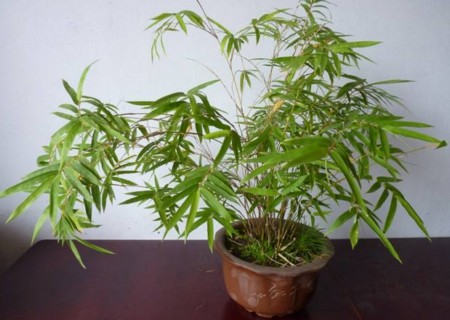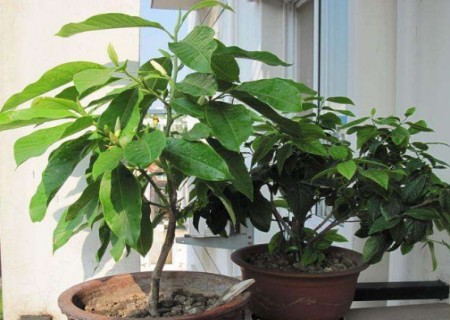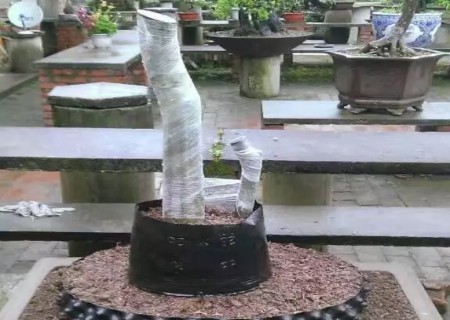What about the yellowing leaves / yellowing leaves of Phyllostachys pubescens
Bamboo is a common plant, but it is a symbol of integrity and modesty in our country, listed in the "four Gentlemen in Flowers", bamboo symbolizes the elasticity of life, it breaks out of the earth, just like a baby in order to get a chance to survive, desperate to break away from the mother, get a new life, bright moon such as frost, good wind such as water, cool leisure court, green bamboo chanting according to steps, straight and straight, clear and lovely. There are not only the iron bones of Meiling cold and proud snow, but also the everlasting nobility of orchid color, and with its "strength", "vanity" and "Xiao Shu" personality, the poet makes the poet fully ponder his gentlemanly style.
Buddha belly bamboo, also known as Buddha bamboo, branches and leaves evergreen, its internodes dilated, shaped like Buddha belly, peculiar shape, hence the name Buddha belly bamboo. Phyllostachys pubescens is a specialty of Guangdong Province, and it is a good material for potted plants and bonsai production. So, what should we do when the leaves turn yellow in the pot plant of Buddha belly bamboo at home? The following editor will make a brief explanation of the yellowing of leaves in summer and winter.

The main causes of yellowing of Phyllostachys pubescens leaves in summer:
The main results are as follows: 1. When the air is dry and the sun is too long, the chlorophyll is destroyed, the bamboo leaves fade, and the leaves of the whole plant are scorched yellow for a long time.
2. Lack of nutrients. Once the nutrient supply is not available, the new bamboo shoots are thin and small, and the old leaves are soon stiff and yellow.
3. Harm of diseases and insect pests. Pay attention to observe insect pests during the peak growth period from May to September, and kill them in time once they are found. If the leaves are yellowed, it is difficult to turn them green with medicine, cut off the yellow leaves, retain the base of the leaves or retain the petiole. After strengthening fertilizer and water management and watering organic liquid fertilizer for several times, new leaves will germinate and old leaves will turn green after 5-6 weeks, which is of double ornamental value.
4. When the plant enters the dormant period, the leaves will naturally wither and yellow.
In view of the above reasons, corresponding measures can be taken, such as the basin soil should be cultivated with loose and fertile soil, water conservation and fertilizer conservation, and families can mix mountain mud and organic fertilizer to compost and prepare.
Pot soil should be cultivated with good properties of loose and fertile, water and fertilizer conservation. Families can take mountain soil and add organic fertilizer to mix well and pile up and set aside. The roots of Buddha belly bamboo must be well developed, so it is appropriate to change a large flowerpot in early spring to add new culture soil. When changing the basin, the overdense roots should be trimmed off and the insect pests root furuncle should be cut off, which is conducive to the germination and growth of bamboo shoots. In the middle of summer, the seedling basin should be shaded to prevent the scorching sun from shining for too long.
The main causes of yellowing of Phyllostachys pubescens leaves in winter:
There are many factors for the yellowing of the leaves of Phyllostachys pubescens in winter, but the main factor is too wet watering or low temperature.
1. At ordinary times, do not water too wet, the root system is easy to rot, the rotten root system will cause leaf loss and yellowing, and the appropriate loose basin soil is beneficial to the loosening, ventilation and drainage of the basin soil and the restoration of root growth.
2. Too low temperature is easy to cause frostbite and yellowing of leaves, so it is best to move into the sunny part of the room to facilitate the normal growth of its leaves.
Time: 2019-05-31 Click:
- Prev

Culture methods of family potted white orchids
The wind breaks the green lotus moss, the flower meaning is still lower than the white jade face; a charm is not easy to send, fragrance from all over the world. This is the description of the white orchid by Yang Wanli, a patriotic poet of the Southern Song Dynasty. Magnolia magnolia is a kind of traditional famous flowers and trees with white and beautiful colors and fragrance. When it blossoms, it is like a sea of snow waves and clouds, which is spectacular.
- Next

How to raise golden marbles down the hill?
The trauma of the downhill pile is mostly very serious, especially the main root, which is almost non-existent. Therefore, in order to make the remaining fine roots survive and produce new roots in the main root section, efforts should be made in the aspects of mining season, pre-planting treatment, soil use, watering and ventilation and daylighting in the process of cultivation. Cultivation of golden marbles downhill piles
Related
- Fuxing push coffee new agricultural production and marketing class: lack of small-scale processing plants
- Jujube rice field leisure farm deep ploughing Yilan for five years to create a space for organic food and play
- Nongyu Farm-A trial of organic papaya for brave women with advanced technology
- Four points for attention in the prevention and control of diseases and insect pests of edible fungi
- How to add nutrient solution to Edible Fungi
- Is there any good way to control edible fungus mites?
- Open Inoculation Technology of Edible Fungi
- Is there any clever way to use fertilizer for edible fungus in winter?
- What agents are used to kill the pathogens of edible fungi in the mushroom shed?
- Rapid drying of Edible Fungi

